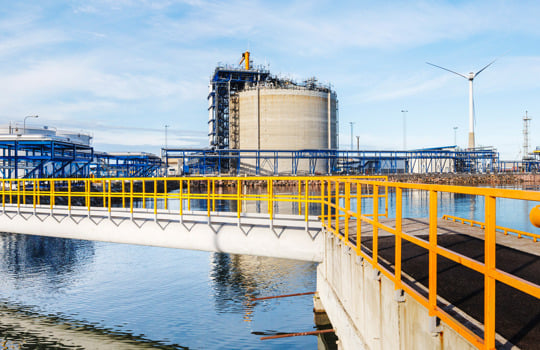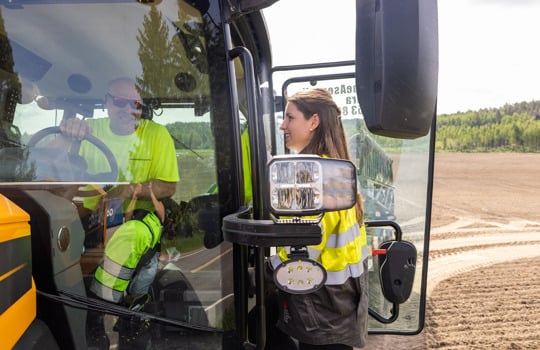Recycled fertilizer for winter wheat growth and soil improvement
Farmer Max Schulman gives organic fertilizers a chance to not just work positively on crops but also on arable land. Gasum’s biogas plant in Lohja produces enough organic renewable, recycled fertilizer for the needs of thousands of hectares of arable land.
Like many others in early May, Max Schulman was waiting for the weather to get warmer and drier. Sown the previous autumn, a parcel of 20 hectares of winter wheat had overwintered well and it was now time to give the shoots some fertilizer to stimulate growth.
Schulman is Secretary for Cereals at the Central Union of Agricultural Producers and Forest Owners (MTK) and lobbies for the interests of the agricultural sector and Finland in the European Union. This is how he has formed a strong opinion also on the circular economy.
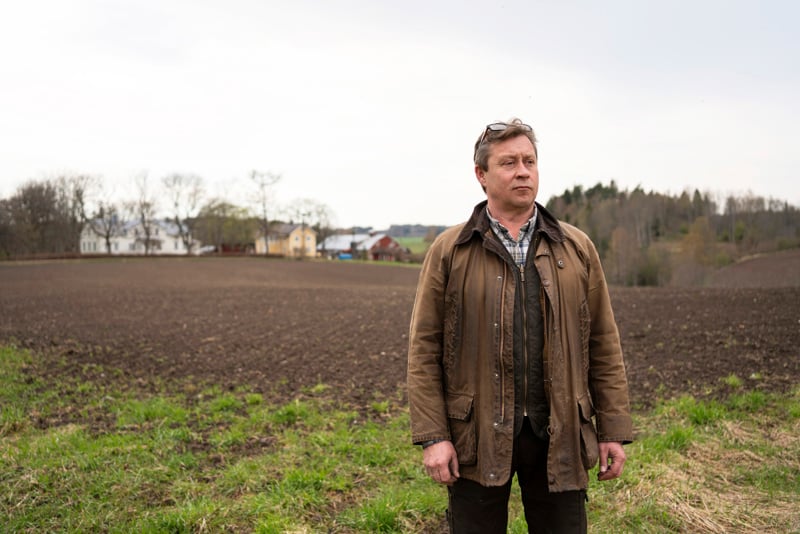
“I’m interested in the renewable raw materials provided by the circular economy. Recycling and processing biowaste are part of this. Besides biogas, the process produces nutrient-rich digestate, which I wanted to try out in cereal production.”
And so it was in April that tanker trucks with 560 cubic meters of recycled fertilizer from Gasum’s nearby biogas plant in Lohja arrived at Schulman’s parcel of winter wheat. The trucks discharged their loads into 55-cubic meter storage tanks, from where the contractor used a slurry tank distributor to apply the fertilizer on the field in one working day.
A total of 120 kg/hectare was applied over an area of 18-hectares. There are two hectares of grass strips serving as turning space at the ends of the parcel. Also, organic material was spread with the fertilizer on the field.
Information through analysis and experience
Livestock farms in the Lohja region have grown few and far between and so many farmers have no experience of slurry spreading. When the biogas plant was completed earlier in the year, Gasum contacted Schulman, and this triggered his interest in recycled fertilizer.
“I thought the idea of working together was a good one and brings the matter closer to farmers on a practical level. I want to see what happens as a result of this and on that basis think about the future.”
The soil is clayey to the south of Lohjanharju and since livestock manure is no longer applied and crop rotation does not work sufficiently, the soil needs organic material. The recycled fertilizer from the biogas plants contains plenty of organic material. The nutrient side is in place overall since there is not too much phosphorus.
Schulman wants to see for himself and also to tell others how recycled fertilizer affects crops and the soil.
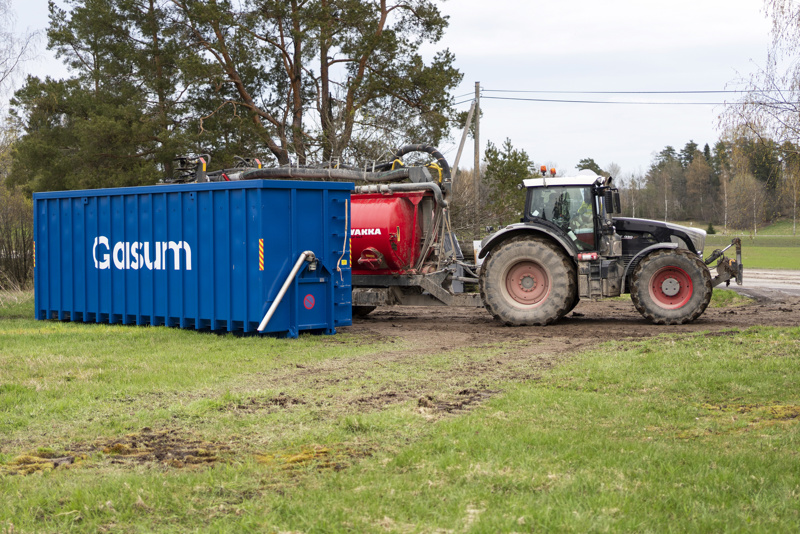
“Farmers need information about how successful application is and what happens during the growing season, in other words how the fertilizer behaves. Regular soil analyses help to monitor how soil fertility of the field improves.
Renewable fertilizer authorized for organic use
Gasum’s biogas in Lohja produces around 40 GWh of biogas and 50,000 tonnes of recycled fertilizer a year. The feedstock for the plant comes from biowaste from shops and consumers and food industry side streams, which are particularly well suited for organic farming.
Schulman’s farm does not have organic status, but this may change going forward. The fertilizer from the biogas plant will have a major role in this.
“I’ll study the results at leisure and make decisions on that basis. Many aspects certainly favor the use of Gasum’s fertilizers since the nutrient values are in place and the logistics work. Naturally price also plays an important role.”
The price policy is open for the time being since all parties are still on the verge of something new. The costs can be estimated more accurately once the nutrient content of the product is verified as production becomes established at the Lohja plant.
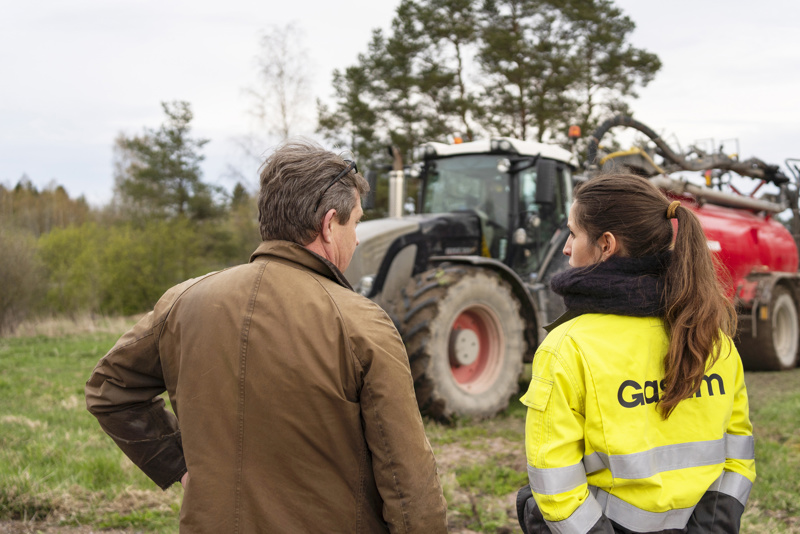
A further word about applying the fertilizer to the extent that even after around 10 mm of rain during the night, the heavy load could be applied leaving surprisingly small traces. Everything is in place for a good crop and hopefully the growing season will be favorable.
“The expectations are positive in many ways. The biogas plant produces enough to fertilize fields over a wide radius in the vicinity.


